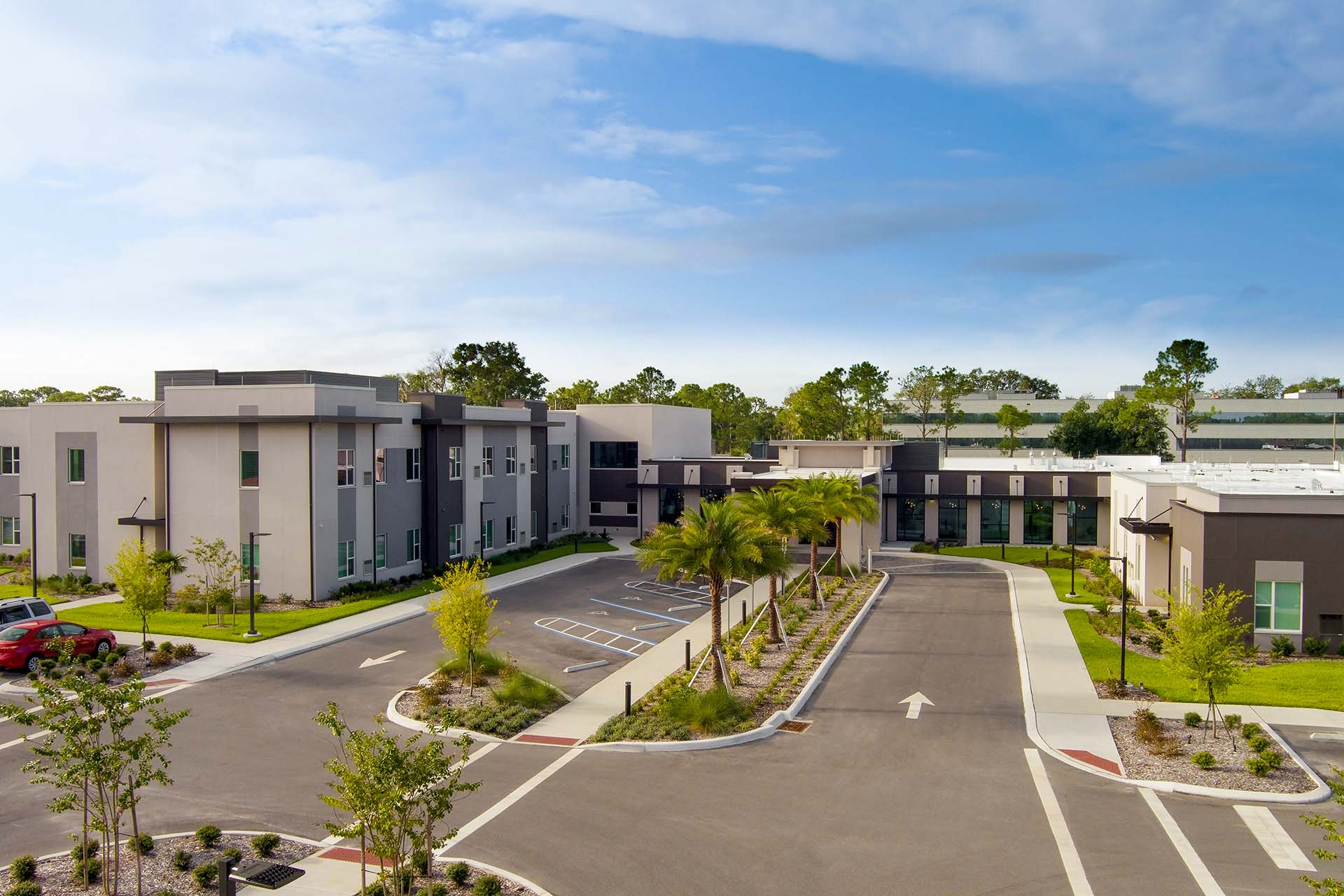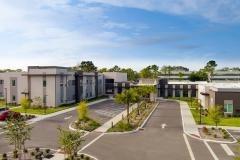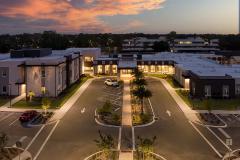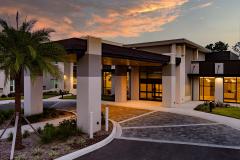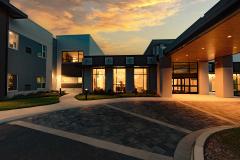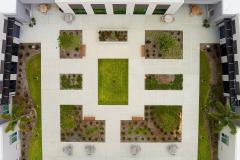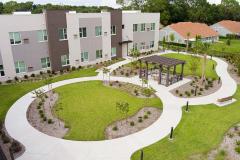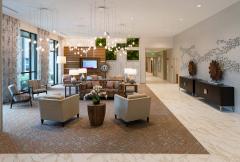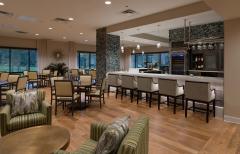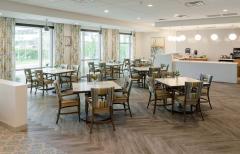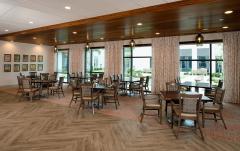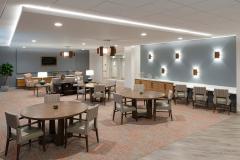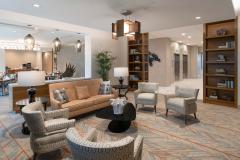Village on the Green Resident Care Center | Longwood, FL
2022 NAHB Best of 55+ Housing Awards - Assisted Living Community Silver Finalist
Located on 80 acres in Longwood, Florida, and just minutes from Wekiwa Springs and bustling Orlando, Village on the Green is a place to discover and thrive in its lush, serene, natural environment which defines this Lifespace luxury LifeCare senior living community. The newest addition, the almost 100,000sf state-of-the-art licensed Resident Care Center features three continuums of care in one united hospitality environment with both 24 Long-Term and 24 Short-Term Skilled Nursing beds, along with 32 Assisted Living Apartments and 18 Memory Care beds. Designed with a mid-century flair, the exterior features broad overhangs, custom grid windows, stone paving at the Porte Cochère complete with a warm wood ceiling and contrasting stucco which blends with the rest of the campus and the Florida aesthetic. Bringing that aesthetic inside, the team was tasked with maximizing daylight throughout the building which was achieved by floor- to-ceiling storefront in both the units and public spaces. The mid-century style was further reinforced through millwork detailing, lighting and furnishings.
The existing luxury senior living community at Village on the Green was developed on an abandoned golf course and comprised of a variety of Independent Apartment buildings, Independent Villas, a Clubhouse, and an aging Skilled Nursing Health Center. Nearly 30 years later, the Owner acquired adjacent “fairways” to expand their continuum of care, presenting a significant challenge with the long, linear nature of the property limits and number of available entries and exits to main roads, as well as accommodating resident, visitor and service traffic with minimal cross circulation. The main planning challenge was in the design of the Resident Care Center - to provide code-required separation between the skilled environment and other building uses, and to also maximize the surrounding lush green spaces by making them an extension of the new Resident Care Center. Further challenges during planning were environmental issues, including the avoidance of wetlands and complying with stormwater detention requirements.
The new project is a mixed-use Resident Care Center which replaces the aging Skilled Nursing Health Center that was demolished, and add three continuums of care in one united hospitality environment with both 24 Long-Term and 24 Short-Term Skilled Nursing Units, 32 Assisted Living Apartments, and 18 Memory Care Units which elevates the already luxury community. The necessary separation was made in the new building by efficiently locating central-shared facilities including a central prep kitchen, back of house functions and administrative and lobby functions. By incorporating a Wellness Courtyard/Garden, an AL Courtyard that directly connects to the existing gardens, and a private Memory Care Garden, they are all truly an extension of the lush surroundings that extend from Hammock Preserve and Wekiwa Springs.
Due to the multiple wetland areas and tremendous requirements for stormwater detention, a large amount of the available land area was utilized to accommodate these stormwater needs.
For decades, the State of Florida maintained an extended moratorium on the construction of new skilled nursing facilities. The planning and design of this replacement health center was one of the first after the moratorium was lifted. What is unique at Village on the Green is the merging of the new Assisted Living and Memory Care units with the replacement Health Center under one roof -- taking advantage of centralized resources while maintaining the identity and dignity of each environment of care. The arrival sequence and entry to the building is reminiscent of a hotel or hospitality venue and devoid of what is generally associated with a healthcare environment. Centralized administrative, marketing, housekeeping and foodservice resources helps keep staffing efficient in this new staff-challenged environment in the industry. Further, the dedicated central prep kitchen frees the centralized kitchen in the existing Clubhouse building from some of the rigors imposed by the State Health Department which no longer has purview there. Planning of terminal pantries and open kitchens in the Health Center and Memory Care allows some cook-to-order ability in the unit while relying on the central kitchen for efficient cooking at scale. Assisted Living dining was placed adjacent to the centralized kitchen which negates the need for a terminal pantry.
Within the Skilled unit, short-stay rehab is physically separated from the long-term care. Understanding the emotional needs and expectation of short-stay rehab patients led to planning which allows them more independence and closer proximity to the rehab/PT/OT and speech facilities with less frequent interaction with long-term care residents with no redundancy of space and support.

